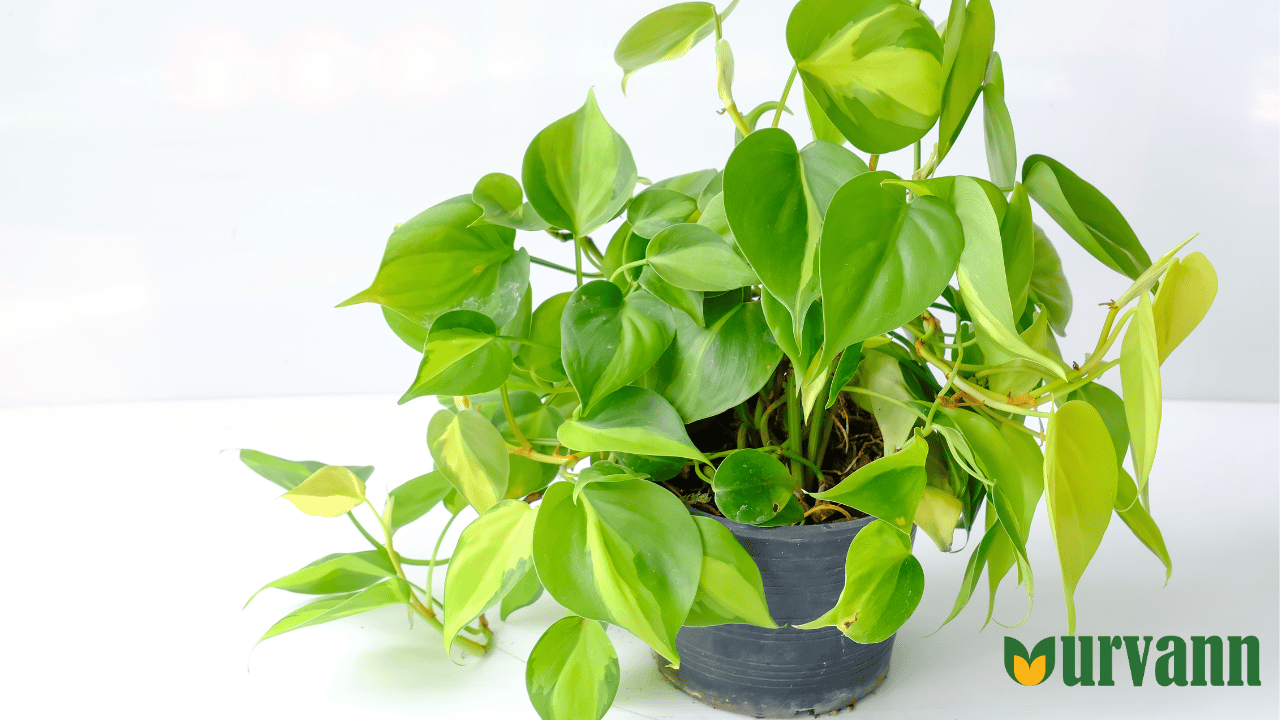Philodendrons have the natural tendency to ooze the feeling of peace in any space, with leaves so shiny and ample in varieties, you can never have enough of these premium Indoor plants.
Philodendron comes in two varieties, which are vining and non-climbing. Climbers are dependent on the source to acquire their shape as they grow, while non-climbers grow upright with leaves flaring out in a dress-like structure. Their glossy leaves and lush green reflection make them a perfect fit for lively decor in homes.
Being a plant with various qualities and types, no matter how much you know about Philodendron, there is always more to know. Hence, this blog will cover the following:
Benefits, How to take care of Philodendron, Philodendron for beginners, Varieties, Three P’s of Planting, Common Problems, History and facts, Frequently Asked Questions about Philodendron. 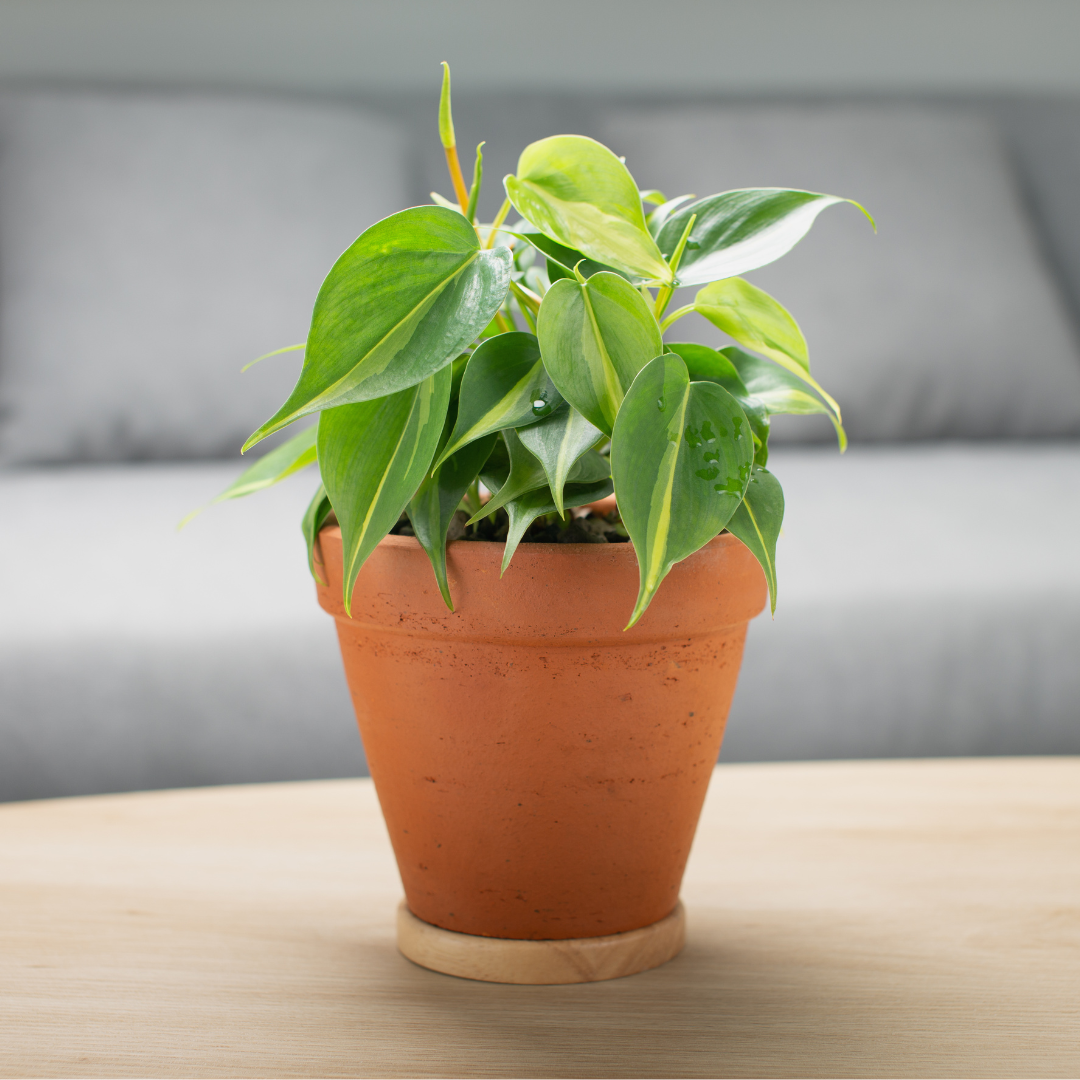
Benefits of Philodendron
-
Natural Air Purifier
The huge leaves of Philodendron help absorb carbon dioxide faster and filter out toxins in the air, which in turn helps in purifying and freshening your environment.
-
Low Maintenance
Philodendron is a low maintenance plant and reduces the efforts one has to put in order to have a green bushy plant that elevates the space and looks lively.
-
Reduces Stress and Enhances Well-Being
In many studies, it has been proven that philodendron, or nature in general, helps reduce anxiety, improve health, and lower blood pressure as it promotes a calming effect and boosts productivity.
-
Elevates the Space
Philodendron is well known in the family of Indoor plants as one of the most beautiful and appealing plants. The fresh green leaves shine in the light, naturally making any space brighten up and adding that flawless soft beauty in any corner it is placed in.
-
Vastu Benefits and the Good Luck Factor
In Feng Shui, Philodendron is considered a special omen that brings peace, wealth, health, and positivity to the family. It is said that if placed according to Vastu in the living room or near the entrance of the house, it clears out any negative vibes one might bring in and boosts the chances of a new opportunity.
How to Take Care of Philodendron
Here's how you can flourish your philodendron plants at home:
Light
Philodendron prefers semi-shady areas for proper growth. Direct sunlight or too much light can burn the leaves of a philodendron. Hence, a place that only experiences indirect sunlight for a few hours in the morning is preferable for this plant.
Water
Dry soil is the most appropriate soil for a philodendron. Overwatering can lead to the growth of fungus, which will then affect the health of the plant. The most appropriate time to water your philodendron is when the upper layer of the soil appears dry.
Temperature
Though perennial, Philodendron thrives in a warm but humid atmosphere; too much heat or rain can damage the plant, which is one of the reasons why it is also an indoor plant. However, even indoors, avoid keeping a philodendron directly under your Air conditioner or heater; the plant needs natural warmth to grow well.
Soil
Use an organic mix that is acidic in nature to promote faster growth in your plant and lush green leaves. Hence, a mixture of Soil, Sand, compost, and cocopeat is the best nutrition for a very healthy growth of your philodendrons. This mix holds enough water to help the plant in the process of photosynthesis and has enough drainage to ensure there is no buildup of fungus or any other bacteria.
Fertilizer
Philodendrons like good feeding during the growing season and less during winter and fall. However, to avoid any kind of pest on these plants. NPK (Nitrogen, Phosphorus, Potassium) once a month, and one magnesium mix every three months is the best dosage of power boost for a Philodendron.
Philodendron for Beginners
Here are concise philodendron care tips for your blog in point form:
- Potting: Use a pot with good drainage holes to avoid water retention
- Light: Place the pot in a bright light area where the sunlight shines for only 3 hrs of the day.
- Watering: Water only when the top inch of soil is dry. Once a week in normal weather is fine.
- Temperature: Avoid placing the plant under direct air conditioning or heat; instead, keep it in warm and humid conditions. In the corner of the living room near a window is the best place.
- Safety: Remember Philodendron should not be ingested in case you have pets or kids at home; keep the plant at a safe distance from them.
The best varieties of philodendron for beginners are the Brasil Philodendron, Heart-leaf Philodendron, and Green Philodendron.
Three P’s of Planting
Pruning philodendron
Pruning is the process by which one removes the selective parts of the plant to keep the plant in a healthy condition and promote growth. These parts can be anything from infected branches to just some dry parts of the leaf.
For Philodendron, the best time for pruning is spring or summer; however, for any plant, it is always advisable to remove yellowing leaves as they appear. While pruning, use clean and sharp scissors to cut just above the leaf nodes, and remove all the yellow, damaged leaves. If the plants grow too full, cut out the excess part. For the vining types, remember to keep cutting off the tip of the vine so the leaves are fuller and not scattered through the vine.
Propagating Philodendron
In simple language, propagating is the process of getting a separate plant out of the already existing plant.
In philodendron, propagating is pretty simple. Cut a healthy stem from the part where it is attached to the main stem and place it in the water. Keep it in a warm, bright place to ensure the steam does not die. Keep changing the water every two days until you see a root emerging. Once the root has emerged, place the same in the soil, and you have your other baby philodendron.
Potting Philodendron
Potting a philodendron is pretty easy; no matter if you are potting your plant from a nursery bed to a ceramic pot or to a larger pot, the process is the same.
1. Always choose a pot size larger than the current one with ample drainage holes.
2. Water your Philodendron a day before to reduce transfer stress.
3. Pot your plant and put more soil near the roots.
4. Once the soil is completely transferred, press on the top to close any air holes that might be there.
5. Water a little on the new soil and spray some on the leaves.
Remember, re-potting your philodendron every two years is crucial to promote healthy growth in them, as the roots expand, they need more room to grow. In plants, the longer and deeper the roots, the larger and healthier the plant.
Common Issues People Face and Solutions
Some of the common problems you face with Philodendrons are as follows:
- Yellowing of leaves, especially in very hot weather. Since Philodendron does not respond well to too much heat, it’s possible that hot weather can damage parts of the plant.
- Philodendrons are care-sensitive; they are easy to maintain, but at the same time, too much of anything, whether it is watering, fertilizing, or repotting, can result in droopy leaves.
- If the soil used in Philodendron is too moist or the humidity is too low, the chances of infestation are very high. Pests like spider mites, aphids, and mealybugs are some of the most common problems.
- If the plant is over-watered, it leads to rotting of roots, a mushy growth on the stem, and a very unpleasant smell. So, a proper drainage system is a must for Philodendron.
- In case of very low light, the plants face a lack of nutrition, which leads to leggy growth that consequently causes their stems to grow too long but too thin, with scattered leaves.
Varieties of Philodendron
-
Philodendron Berkin
Features striking bands of white and green variegation on its leaves, making it a colorful and easy-care indoor statement plant.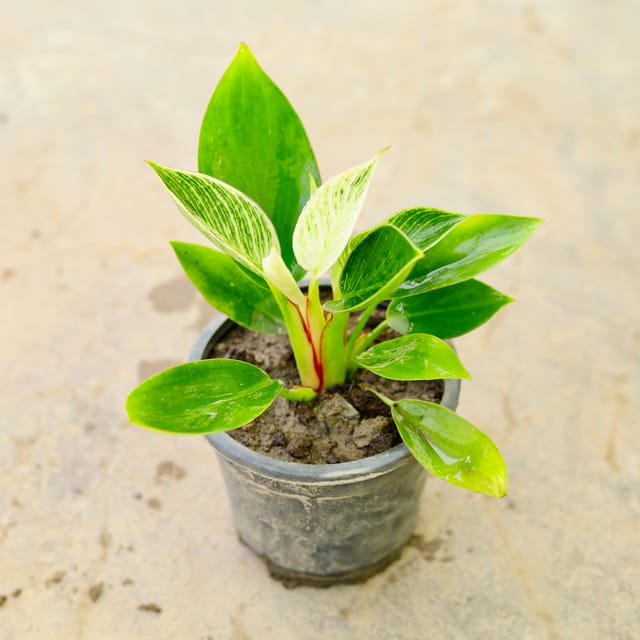
-
Philodendron Pink Princess
Renowned for its dramatic blackish leaves adorned with hot pink variegation, creating a highly sought-after and unusual aesthetic.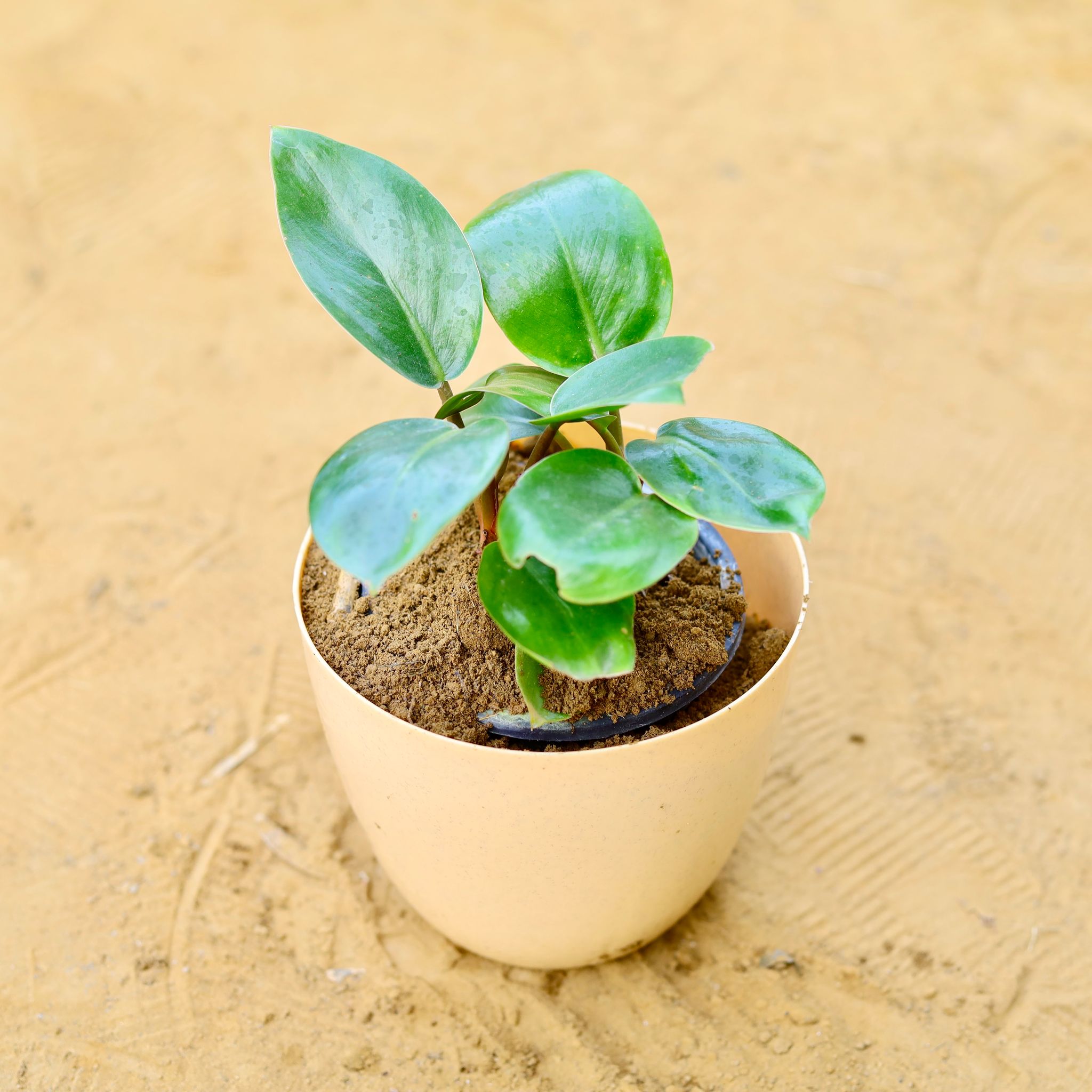
-
Philodendron Golden
Stands out with its vibrant golden-yellow foliage and fast, easy growth, brightening any indoor space.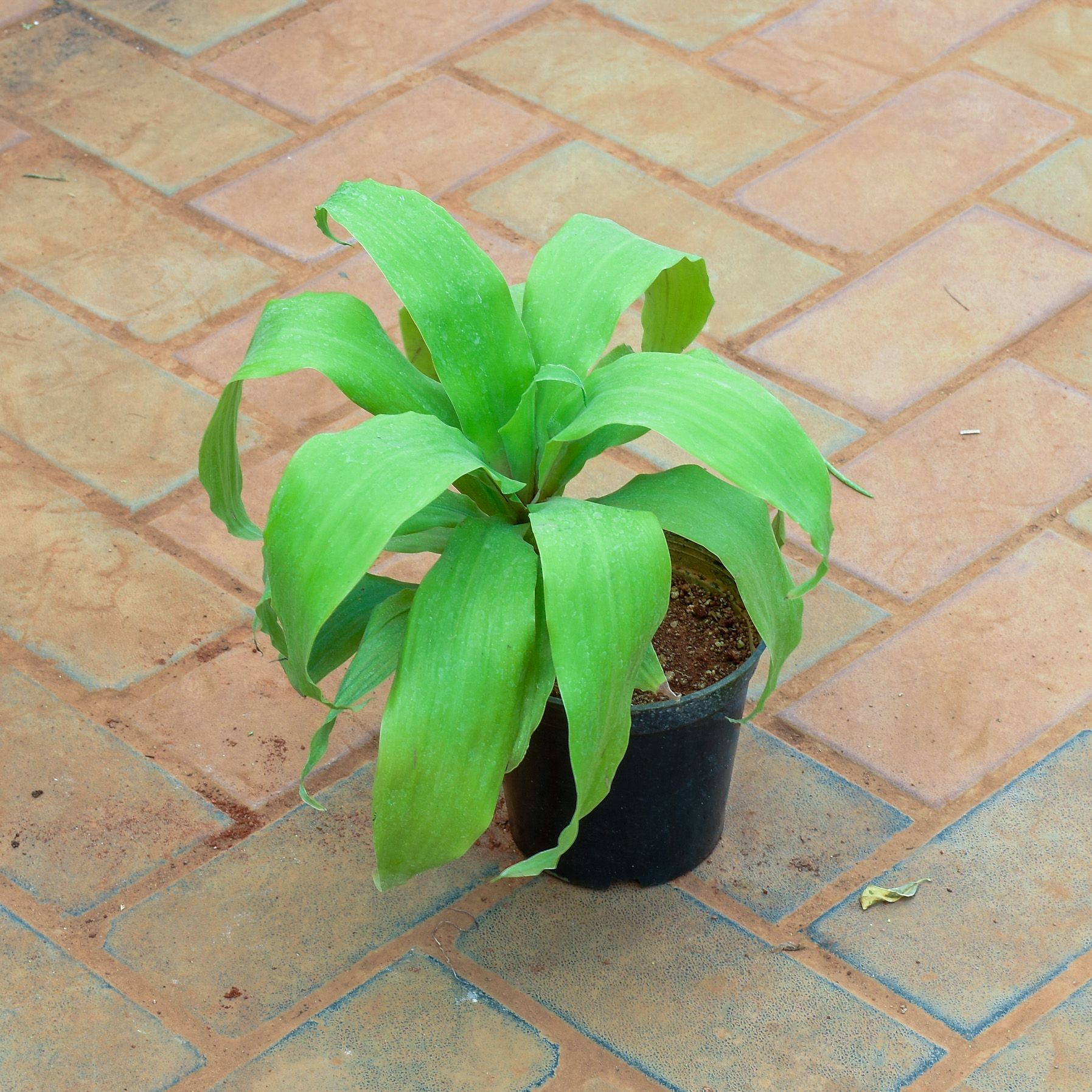
-
Philodendron Sellom
Known for its deeply lobed, dramatic foliage and robust, tree-like presence, it is often used as a landscape or large indoor specimen.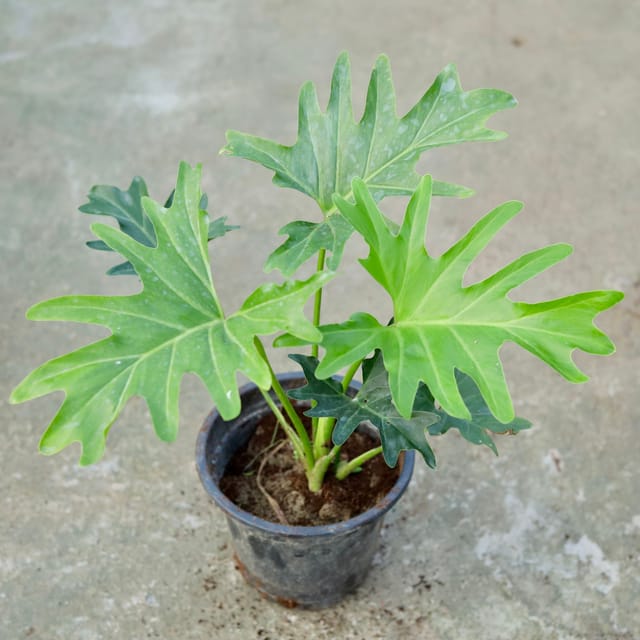
-
Philodendron Black
Prized for glossy, deep burgundy to almost-black leaves and a compact, bushy growth habit.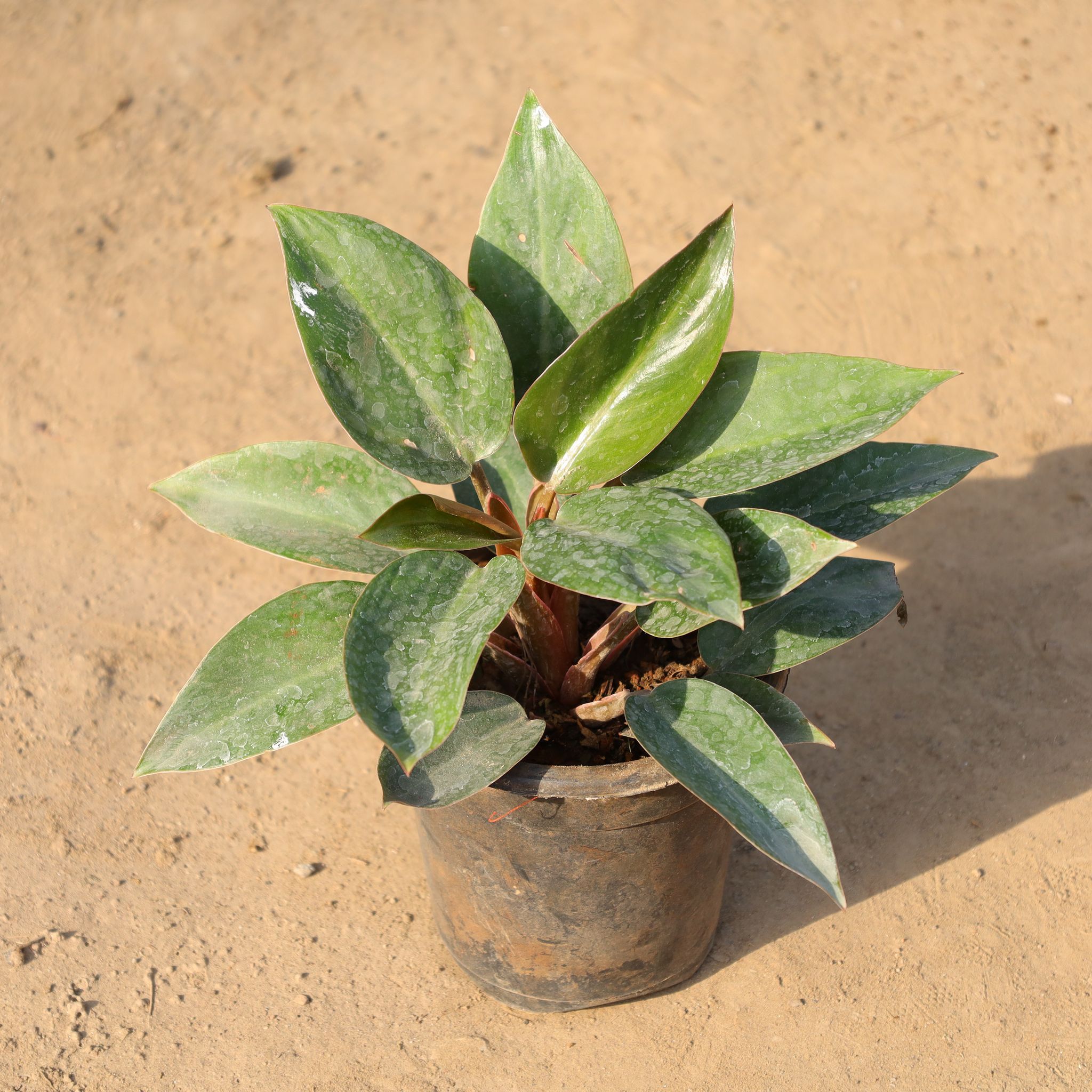
-
Philodendron Xanadu
Recognized for its compact, tidy growth and decorative, small lobed leaves, making it a low-maintenance, pest-free plant ideal for massed displays or pots.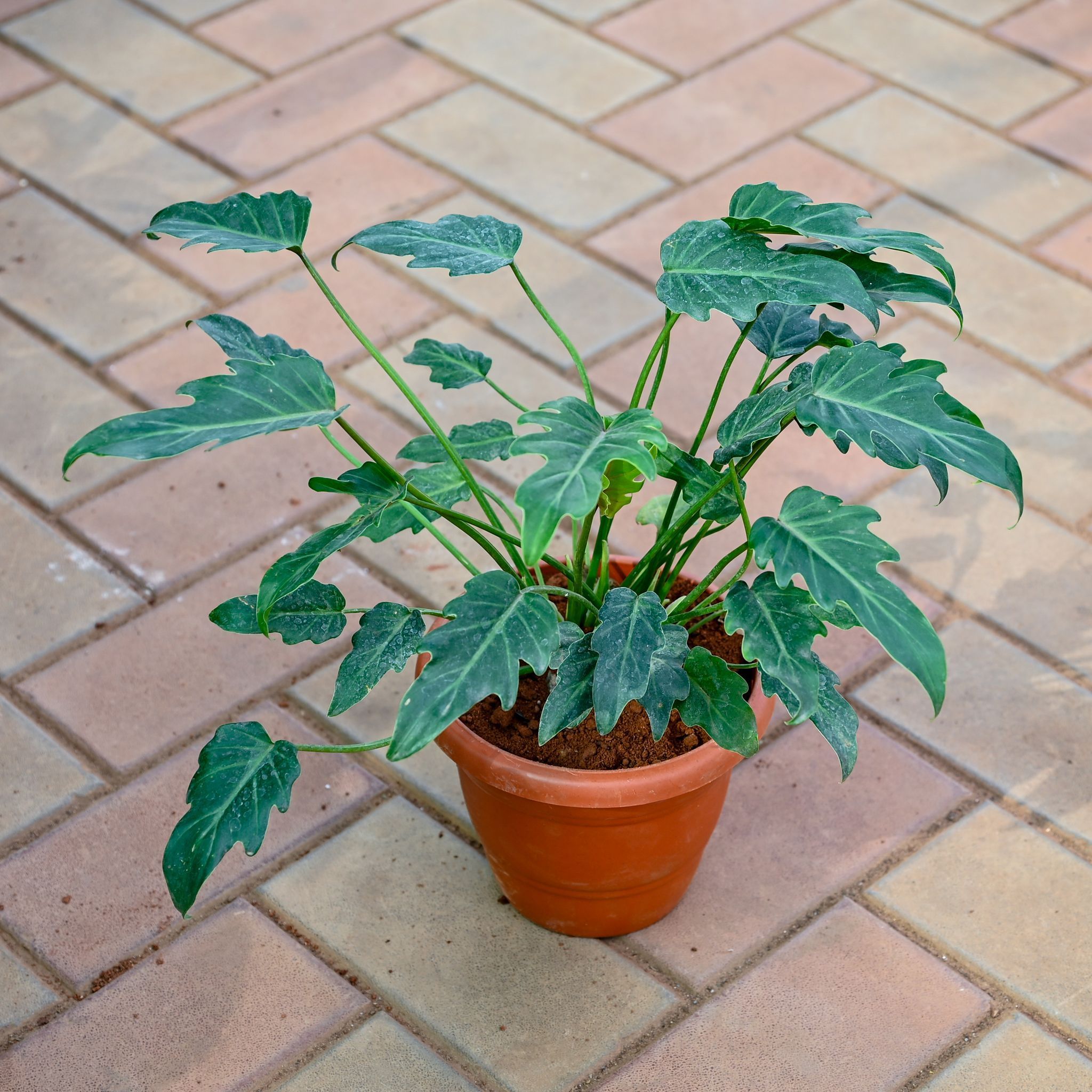
-
Philodendron Imperial Red Candid
Features large, shiny leaves that transition from deep burgundy to glossy dark green, offering bold color contrast in a self-heading form.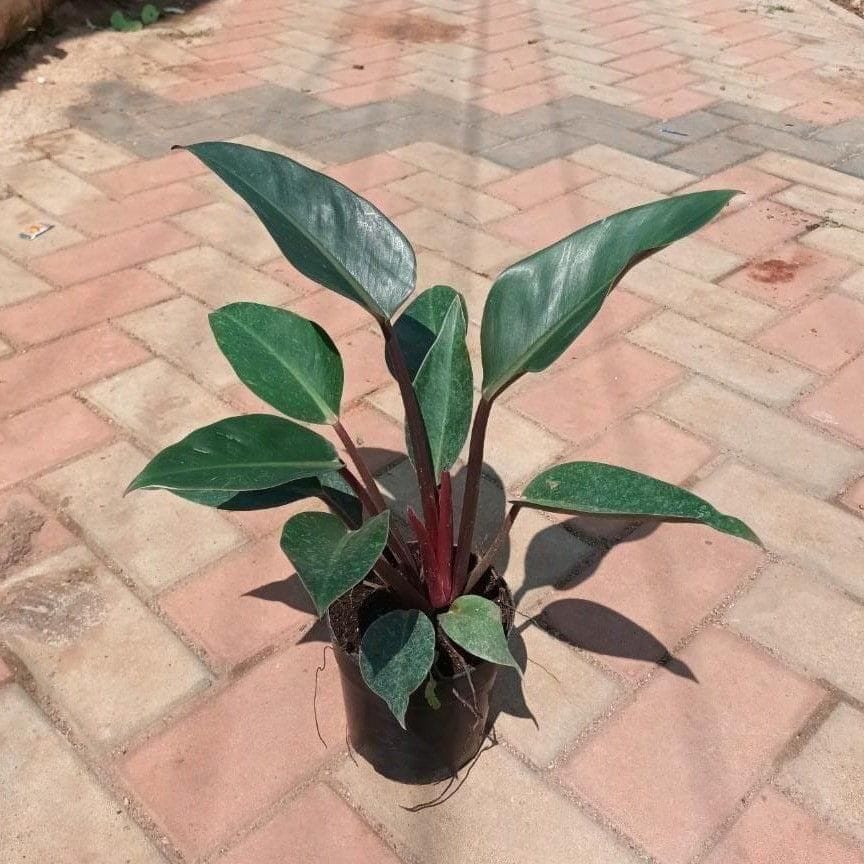
-
Philodendron Red Ruby
Not covered in the provided results, but generally known for its vibrant reddish stems and foliage, adding a splash of color to collections.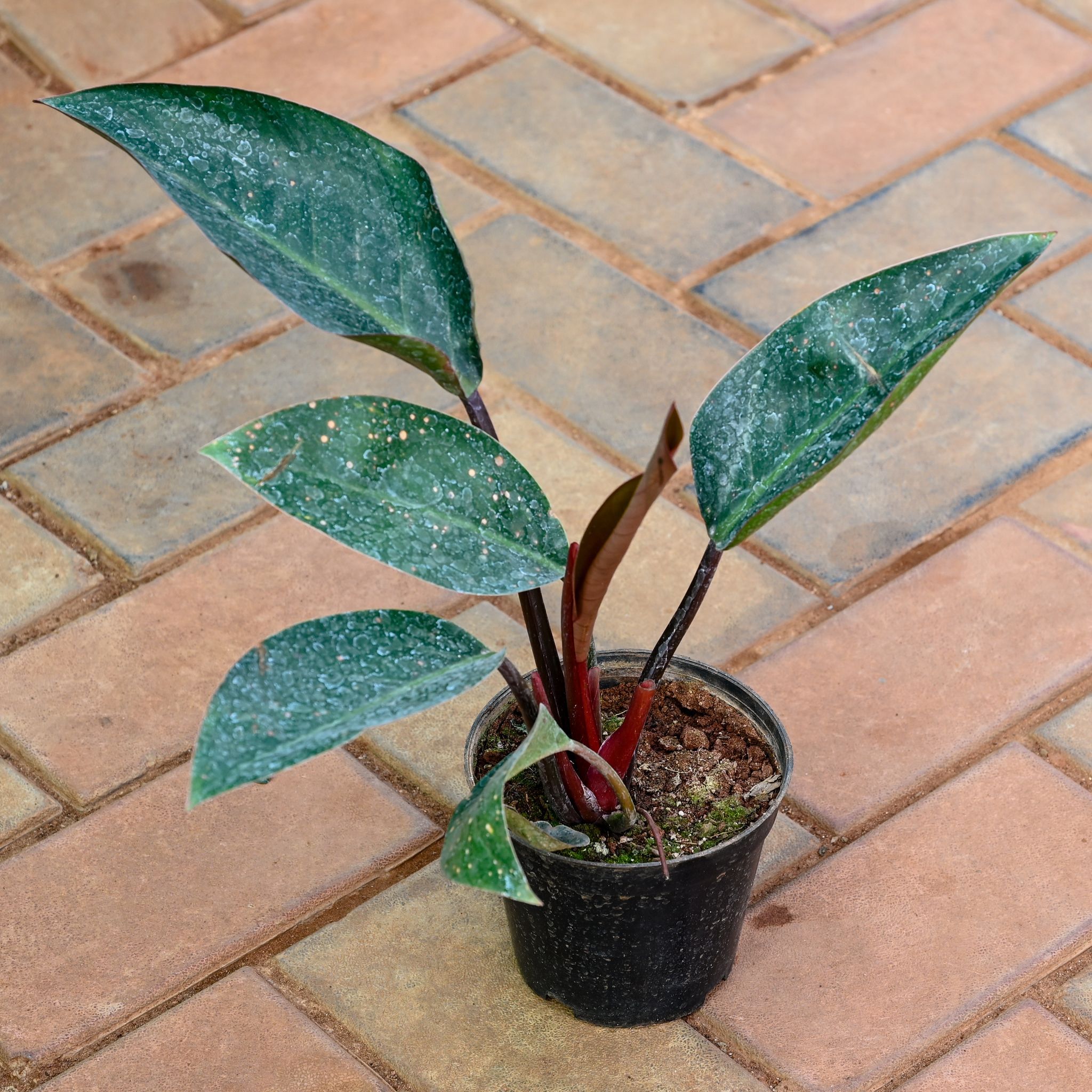
-
Philodendron Imperial Green
Not covered in the provided results, but typically valued for its lush, broad, glossy green leaves and upright, self-heading habit.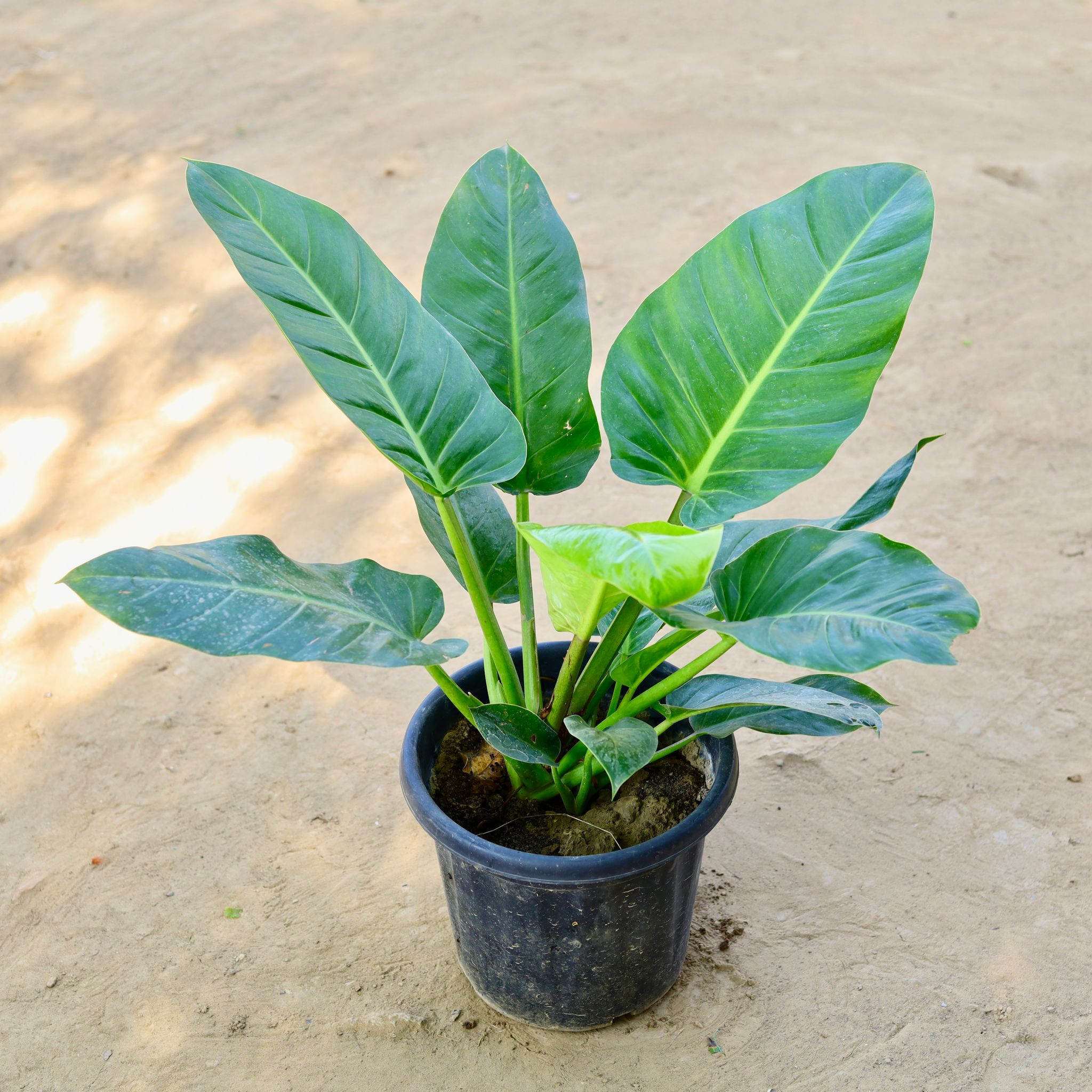
To shop for the Philodendrons mentioned above, click here: Philodendron Best Collection.
History and Facts about Philodendron
|
Name |
Philodendron |
|
Genus |
Philodendron |
|
Family |
Araceae |
|
Origin |
Tropical America |
|
Life Cycle |
Perennial |
|
Maximum Length |
Up to 30 ft (varies by species) |
|
Number of Species |
450–621 (varies by source) |
|
Leaf texture |
Glossy / Velvety |
|
Maintenance Level |
Low to moderate |
|
Toxicity |
Toxic |
History
Philodendrons are known to be a 70-million-year-old species. They were first found growing in the innermost regions of the forest in low-light and warm areas and in the basements of high-rise castles and towers. It is believed that the philodendrons naturally diversified into so many varieties when the first of them grew in the Amazon rainforest. Different climates, insects, watering throughout the year, light, and soil led to various diversification in these plants.
The original place of birth for philodendrons is known to be America; however, its adaptive quality led it to become a known plant all around the world, and its low-maintenance quality made it one of the most well-known names in the home decor community as well.
If you look at philodendrons from a scientific lens, it was first discovered by George Margaf in 1644; however, it was through Charles Plumier in the 17th century that it got its name around the world
Among all the qualities, characteristics, and history, one fun fact about this plant is that it holds the capability to grow tremendously long. One houseplant owner in Massachusetts had a Philodendron vine that grew over 1100 feet long! This showcases their fast growth and vigorous climbing ability when given ideal conditions
Philodendrons are not just the magic of nature, but of mankind just as much.
Conclusion
In conclusion, Philodendrons are an absolute must-have for every home. These versatile plants are not just stunning additions to your décor, but they also offer incredible benefits that make them truly indispensable. With their rich history, endless varieties, and easy-going nature, Philodendrons promise to grow gracefully alongside you, adding beauty, freshness, and a touch of nature to your space. Watch as your Philodendron transforms into a lush, vibrant companion that keeps surprising you with its charm.
Frequently Asked Questions
-
Is Philodendron a good indoor plant?
Yes, Philodendrons are excellent indoor plants as they thrive in low lighting and come in various colors and varieties. The big, lush leaves of Philodendron reflect the lights inside the home and act as a natural ornament in the space, making it an excellent decor.
-
Do philodendrons like full sun or shade?
Though Philodendrons grow faster in bright light, it is often observed that they thrive in low or indirect light. While bright light increases the spurt process in them in most cases, it also leads to the burning of leaves; low light ensures shiny, lush leaves that are wide and bright.
-
Is philodendron a lucky plant?
Yes, Philodendron is a very lucky plant, and in many cultures, it is believed to bring prosperity to the household. It is one of the best gift options for housewarming, birthdays, and promotions.
-
Do philodendrons clean the air?
Yes, philodendrons are known as one of the best air-purifying plants. The big leaves of philodendron help absorb carbon dioxide faster and filter out toxins in the air, which in turn helps purify and freshen your environment.
-
Why are philodendrons so expensive?
Philodendrons are rare and exotic plants, a plant famous for so many qualities and varieties, catches a lot of attention, and hence its high demand makes it rate on the higher side among plants. However, if you wish to bring this beauty home at affordable rates, you can check out Philodendons at urvann.


